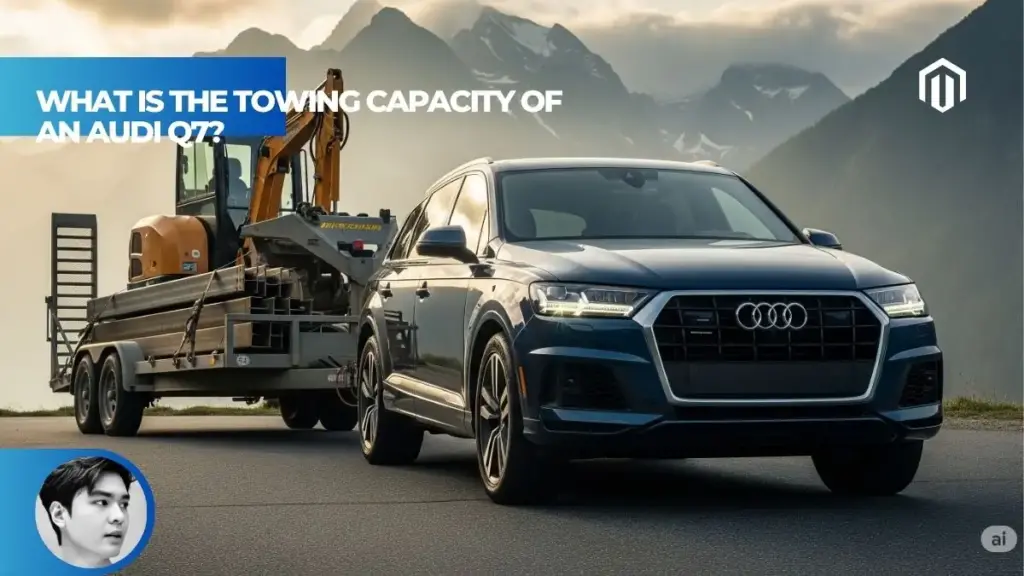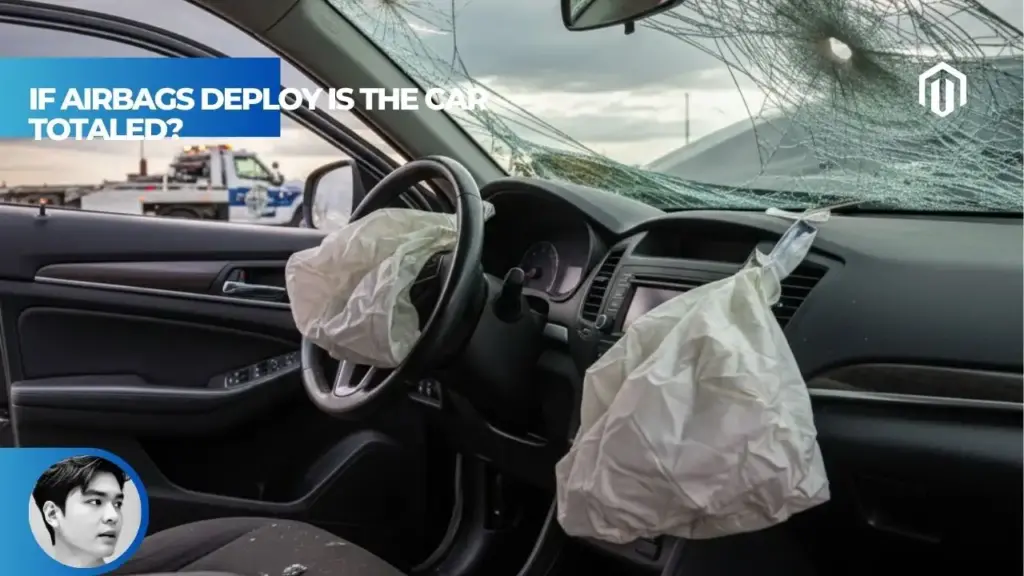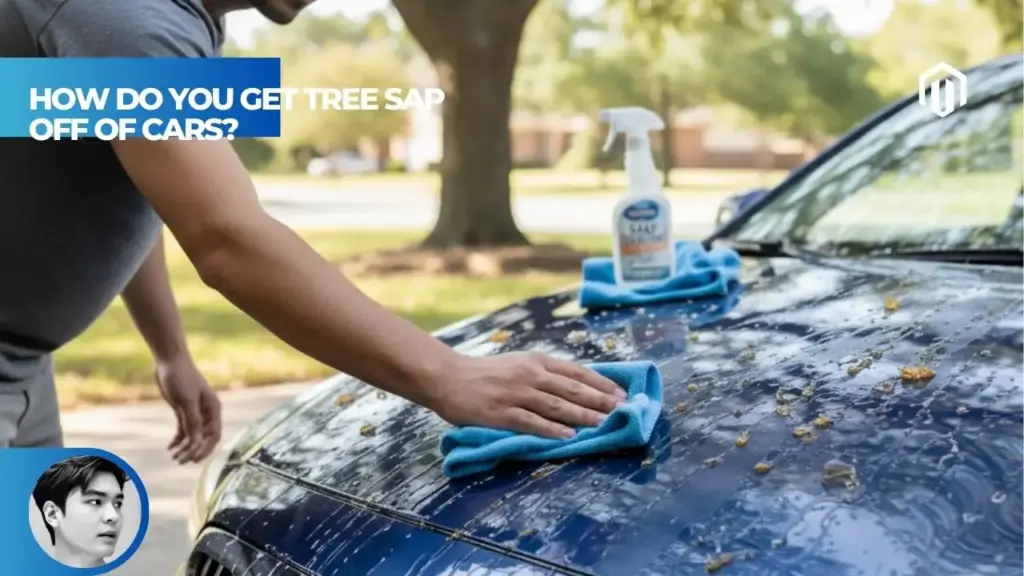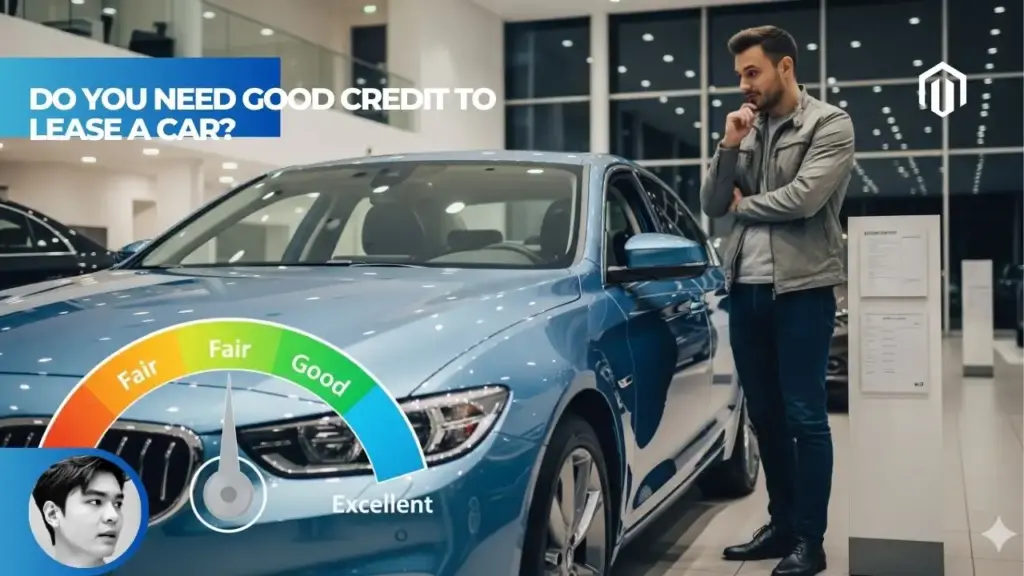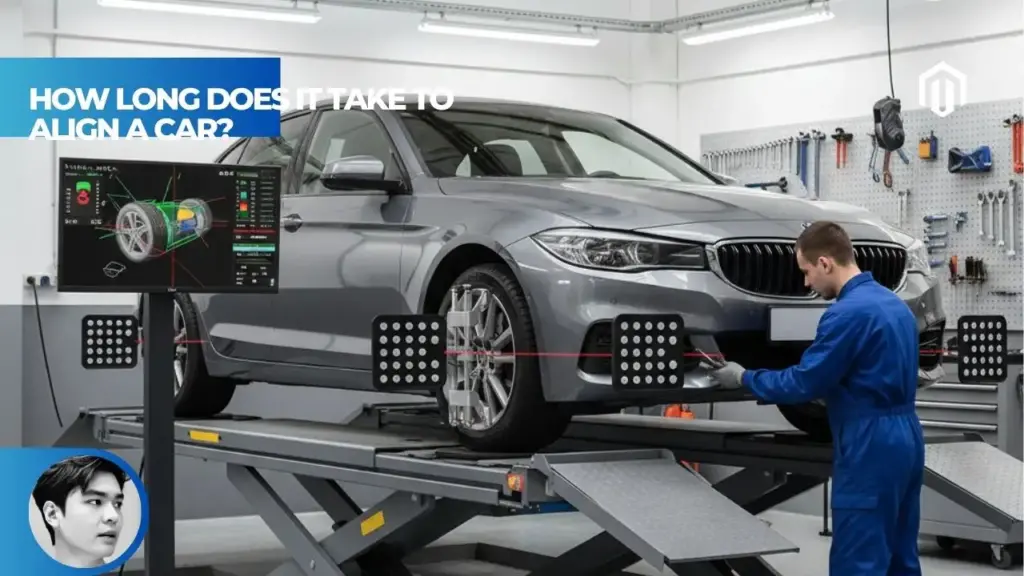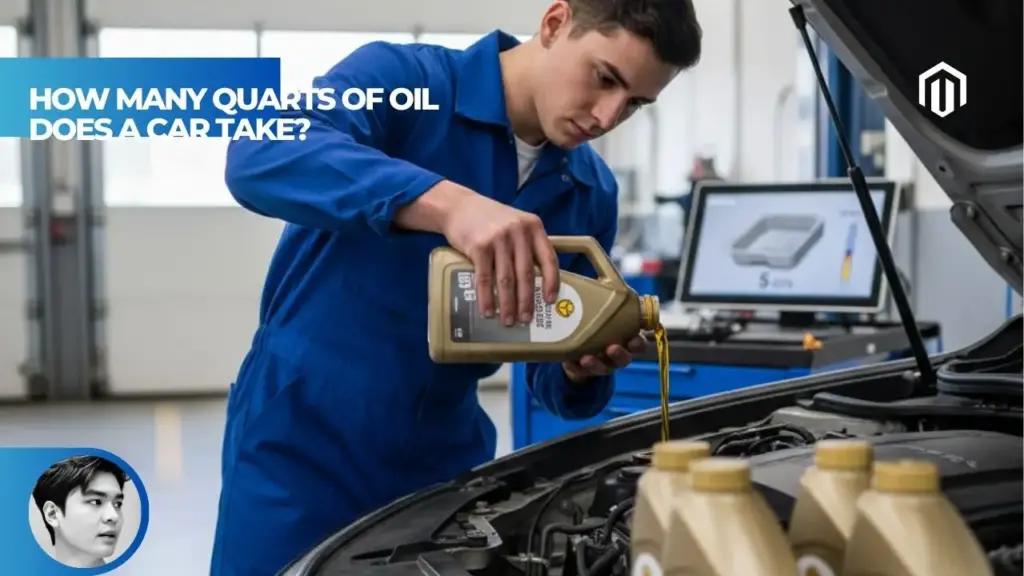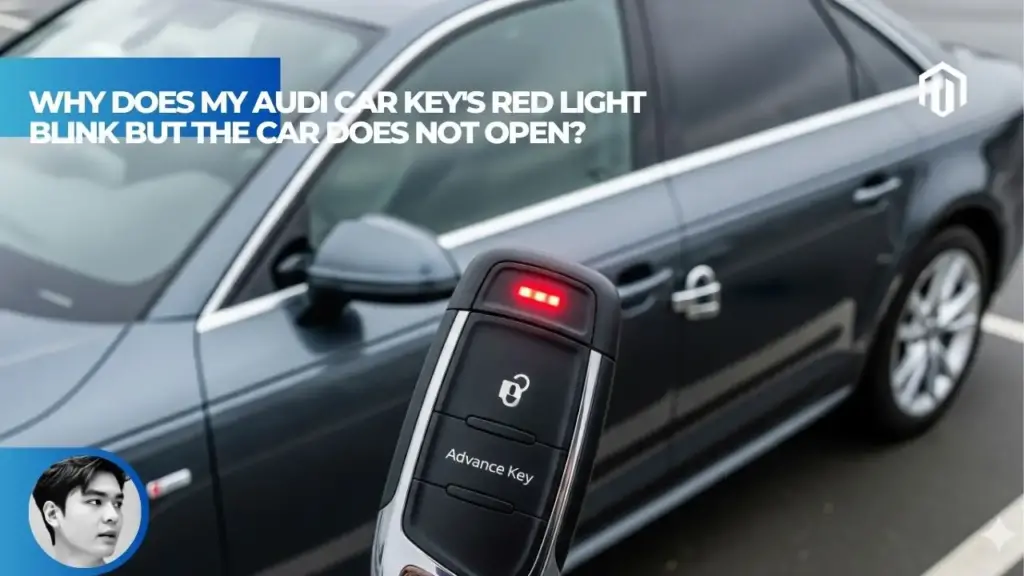You may also like:
The 2025 Audi Q7 offers two distinct towing capacities based on engine configuration: 4,400 pounds for the 4-cylinder 45 TFSI model and 7,700 pounds for the V6 55 TFSI and V8 SQ7 models when properly equipped with the factory towing package. The difference depends entirely on which engine you select and whether your vehicle includes the necessary Class III hitch receiver and 7-pin electrical connector.
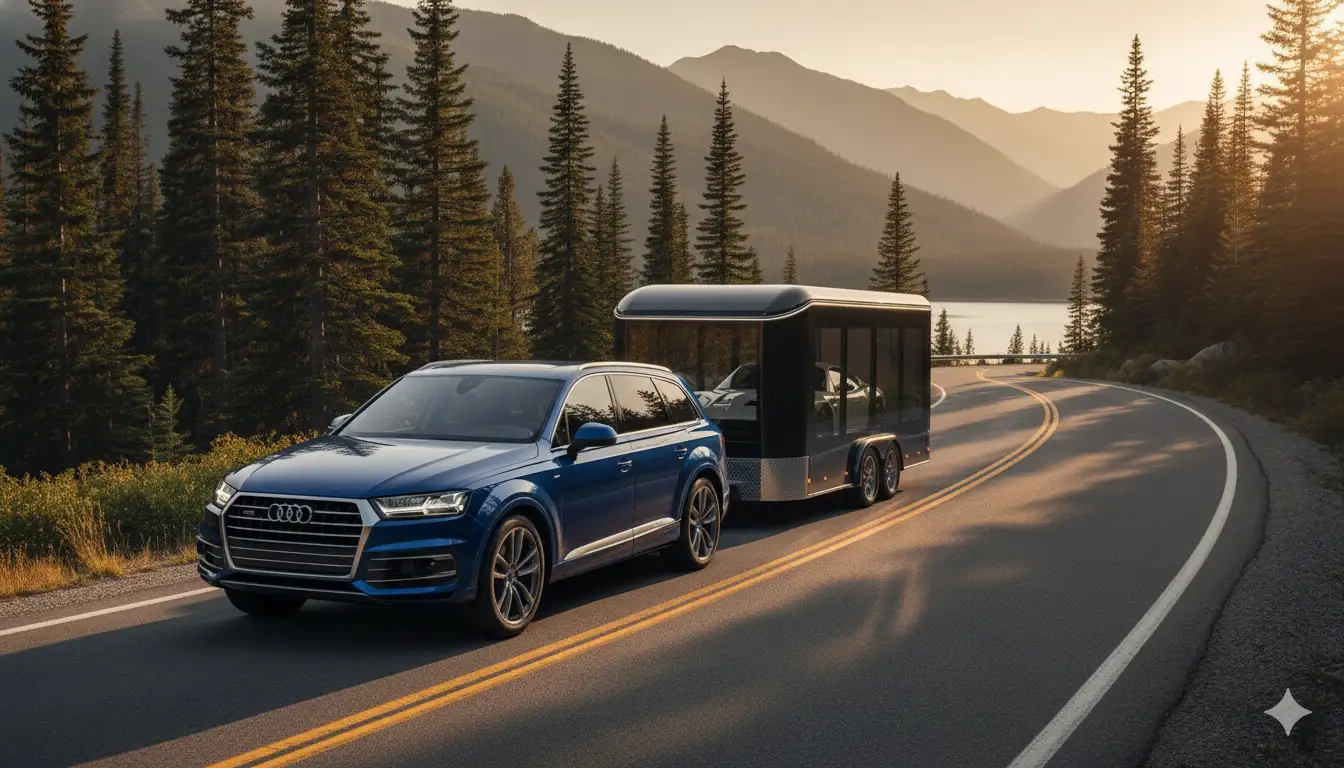
Audi Q7 Maximum Towing Capacity Overview
Understanding the Audi Q7’s towing capabilities requires recognizing that not all Q7 models are created equal. The substantial difference between the 4,400-pound and 7,700-pound ratings reflects fundamental engineering differences in powertrains and equipment packages[1].
The 7,700 lbs Capacity: Factory Towing Package Requirements
The maximum 7,700-pound towing capacity represents the Q7’s full potential when equipped with the V6 or V8 engine and factory towing package. This rating meets SAE J2807 testing standards, ensuring safe operation under standardized conditions[1]. The package includes critical components beyond just a hitch receiver.
According to Autvex’s analysis, achieving this capacity requires the complete factory towing package, which integrates seamlessly with the Q7’s electronic stability systems. The package includes enhanced cooling for both engine and transmission, crucial for maintaining performance under heavy loads. When researching how many miles is good for a used car, consider that towing history significantly impacts vehicle wear.
The 4,400 lbs Capacity: Standard/Base Hitch Configuration
The 4,400-pound rating applies to Q7 models with the base 2.0-liter turbocharged engine or vehicles without the proper towing equipment. This lower capacity still accommodates small boats, utility trailers, and lightweight campers[2]. The limitation stems from the engine’s reduced torque output rather than chassis capability.
Many owners find this capacity sufficient for weekend recreational activities. Small aluminum fishing boats, jet skis on trailers, or pop-up campers fall well within this range.
How Much Can a 2025 Audi Q7 Tow (Complete Breakdown)
The complete towing picture involves multiple factors beyond raw capacity numbers. Proper weight distribution, tongue weight calculations, and understanding payload impacts are essential for safe towing operations.
| Configuration | Engine | Towing Capacity | Typical Use Cases |
|---|---|---|---|
| Q7 45 TFSI | 2.0L 4-cyl | 4,400 lbs | Small boats, utility trailers |
| Q7 55 TFSI | 3.0L V6 | 7,700 lbs | Travel trailers, larger boats |
| SQ7 | 4.0L V8 | 7,700 lbs | Heavy equipment, large RVs |
Audi Q7 Towing Capacity by Engine Type
Each engine option delivers distinct performance characteristics that directly impact towing capability. Understanding these differences helps buyers select the appropriate configuration for their needs.
Audi Q7 45 TFSI Towing Capacity (4-Cylinder Engine)
The Q7 45 TFSI features a 2.0-liter turbocharged four-cylinder producing 261 horsepower and 273 pound-feet of torque[1]. This engine includes a 48-volt mild-hybrid system that improves efficiency but doesn’t significantly boost towing capacity. The 4,400-pound maximum reflects the engine’s torque limitations, particularly when climbing grades.
Fuel economy remains respectable at 20 mpg city and 26 mpg highway without a trailer. Expect a 30-40% reduction when towing near capacity. The eight-speed Tiptronic transmission manages gear selection effectively, though downshifting occurs frequently under load.
Audi Q7 55 TFSI Towing Capacity (V6 Engine)
The 55 TFSI’s 3.0-liter turbocharged V6 generates 335 horsepower and 369 pound-feet of torque, enabling the full 7,700-pound towing capacity[2]. This engine provides sufficient reserve power for maintaining highway speeds while towing, crucial for safe merging and passing maneuvers.
The V6’s torque curve peaks at just 1,370 rpm, delivering strong pulling power from low speeds. Acceleration from 0-60 mph takes 5.5 seconds unladen, demonstrating ample performance reserves. Fuel economy decreases to 18 mpg city and 23 mpg highway before adding trailer weight.
Audi SQ7 Towing Capacity (V8 Engine)
The range-topping SQ7 employs a 4.0-liter twin-turbocharged V8 producing 500 horsepower and 568 pound-feet of torque[1]. Despite the substantial power increase, towing capacity remains at 7,700 pounds due to chassis and cooling system limitations rather than engine capability.
The V8’s additional power provides confidence when towing in challenging conditions like mountain grades or strong headwinds. If you’re comparing luxury performance SUVs, the 2025 BMW 2-Series Gran Coupe offers different capabilities in a smaller package.
Audi Q7 Towing Limit Comparison Chart
Understanding how the Q7’s specifications translate to real-world capability helps set appropriate expectations for towing performance.
| Model | Power/Torque | 0-60 mph | Towing Capacity | Tongue Weight Limit |
|---|---|---|---|---|
| Q7 45 TFSI | 261hp/273lb-ft | 6.7 sec | 4,400 lbs | 440 lbs |
| Q7 55 TFSI | 335hp/369lb-ft | 5.5 sec | 7,700 lbs | 770 lbs |
| SQ7 | 500hp/568lb-ft | 4.3 sec | 7,700 lbs | 770 lbs |
Audi Q7 Towing Package Requirements
Proper equipment installation determines whether your Q7 can achieve its maximum rated capacity safely and legally.
Does the Audi Q7 Come with a Tow Hitch Standard?
No, the tow hitch is not standard equipment on any Q7 trim level. Buyers must specifically order the factory towing package or have it dealer-installed after purchase[3]. This approach allows Audi to optimize fuel economy and handling for buyers who never tow.
The absence of standard towing equipment surprises some luxury SUV buyers accustomed to inclusive packaging. However, this strategy keeps base prices competitive while allowing customization for specific needs.
What Is Included in the Audi Q7 Towing Package?
The comprehensive factory towing package includes multiple integrated components beyond the visible hitch receiver[3]:
- Class III receiver hitch with 2-inch opening
- 7-pin electrical connector with weatherproof housing
- Integrated trailer brake controller accessible through MMI
- Enhanced engine and transmission cooling
- Trailer Stability Assist programming
- Modified suspension calibration for loaded conditions
These components work together to ensure safe, stable towing at maximum capacity. The integration with vehicle electronics provides features like trailer sway control and hill start assist.
Audi Q7 7-Pin Connector and Factory Tow Package Features
The 7-pin connector provides power for trailer lights, electric brakes, and auxiliary functions like reverse lights and 12V charging[4]. This standardized connection ensures compatibility with most North American trailers without adapters.
Advanced features include automatic headlight adjustment to compensate for trailer tongue weight and blind spot monitoring that accounts for trailer length when properly configured. Understanding does Audi charge for Apple CarPlay helps budget for technology features that enhance the towing experience.
Can You Add a Tow Package to an Audi Q7?
Yes, Audi dealers can install the official towing package on Q7s not originally equipped, though costs increase compared to factory installation. Dealer installation typically ranges from $1,500-$2,000 including parts and labor[4].
Aftermarket options exist but may not provide full integration with vehicle systems. Generic hitches often lack the electrical integration and cooling upgrades of factory equipment, potentially limiting safe towing capacity.
Audi Q7 Towing Package Cost
Factory-ordered towing packages cost approximately $700-$1,200 depending on trim level and bundling with other options[4]. This represents significant savings versus dealer installation after delivery.
Cost breakdown:
- Factory package at order: $700-$1,200
- Dealer post-delivery installation: $1,500-$2,000
- Quality aftermarket with professional installation: $800-$1,500
- DIY basic hitch (not recommended): $400-$700
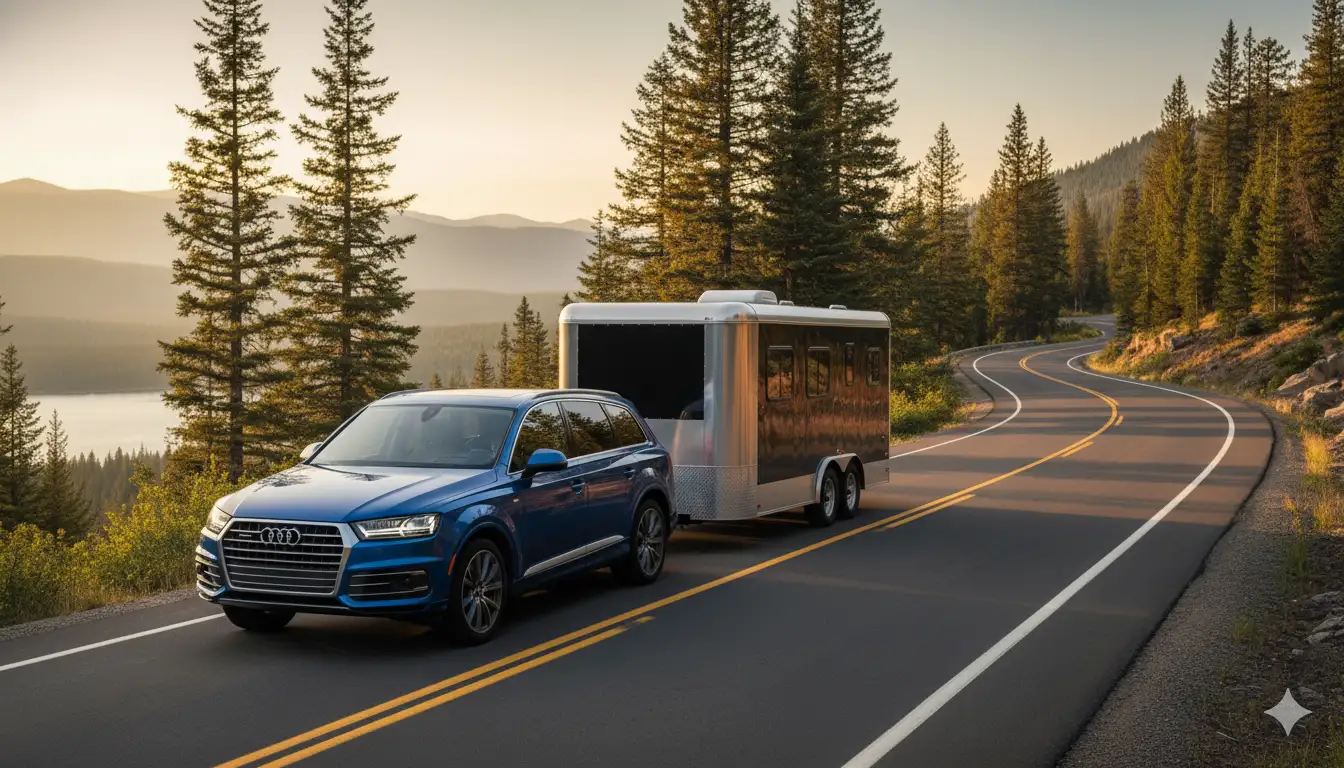
Real-World Towing Scenarios
Understanding practical applications helps owners maximize their Q7’s utility while maintaining safety margins.
Can an Audi Q7 Tow a Boat?
Yes, the Audi Q7 excels at towing boats within its capacity limits. The 4-cylinder model handles boats up to approximately 18 feet, while V6/V8 models can manage boats up to 24 feet depending on weight[1].
Consider total weight including:
- Boat hull and equipment
- Fuel (6 pounds per gallon)
- Water in tanks
- Trailer weight (typically 600-1,500 pounds)
- Gear and supplies
The Q7’s quattro all-wheel drive provides excellent traction at boat ramps, even on wet or sandy surfaces. The hill descent control feature proves valuable when backing down steep launch ramps.
Can an Audi Q7 Tow a Travel Trailer or Airstream?
The V6 and V8-equipped Q7s can tow many popular travel trailers and smaller Airstream models. The 7,700-pound capacity accommodates trailers up to approximately 25 feet in length[2].
Popular compatible models include:
- Airstream Bambi (16-22 feet, 3,000-4,500 pounds)
- Forest River R-Pod (various models under 5,000 pounds)
- Grand Design Imagine XLS (select models)
- Jayco Jay Flight SLX (lighter configurations)
Remember that advertised dry weights exclude cargo, water, and propane. Add 1,000-1,500 pounds to published weights for realistic calculations.
Can an Audi Q7 Tow a Car Trailer?
Car trailers typically weigh 1,500-2,500 pounds empty, leaving substantial capacity for vehicle transport with properly equipped Q7s. The V6/V8 models can safely transport most passenger cars on appropriate trailers[5].
Example scenarios:
- Compact car (3,000 lbs) + trailer (2,000 lbs) = 5,000 lbs total
- Sports car (3,500 lbs) + trailer (2,200 lbs) = 5,700 lbs total
- Small SUV (4,500 lbs) + trailer (2,000 lbs) = 6,500 lbs total
What Can a 7,700 lb Towing Capacity Pull?
The 7,700-pound capacity opens numerous recreational and utility possibilities[1]:
Recreational Options:
- Mid-size travel trailers (20-26 feet)
- Wakeboard/ski boats (up to 23 feet)
- Horse trailers (2-horse bumper pull)
- Race car and enclosed trailer combinations
Utility Applications:
- Equipment trailers with compact tractors
- Small construction equipment
- Landscape trailers fully loaded
- Car haulers with vehicles
Additional Towing Specifications
Critical specifications beyond raw capacity determine safe towing practices and legal compliance.
Audi Q7 Tongue Weight Capacity
Tongue weight should equal 10-15% of total trailer weight for optimal stability. The Q7’s maximum tongue weight equals 770 pounds for V6/V8 models and 440 pounds for 4-cylinder versions[2].
Proper tongue weight prevents dangerous trailer sway while avoiding excessive rear suspension compression. Weight-distributing hitches help manage tongue weight but don’t increase towing capacity.
Audi Q7 Adaptive Air Suspension for Towing
Available adaptive air suspension automatically adjusts ride height and damping for loaded conditions. The system maintains level ride height regardless of tongue weight, improving stability and headlight aim[6].
Self-leveling capability proves particularly valuable when towing, eliminating the rear-end squat that affects handling and braking. The suspension also includes a loading mode that lowers the vehicle for easier hitching.
Can an Audi Q7 Tow a 6,000 lb Trailer?
Yes, Q7 models with V6 or V8 engines and proper equipment can safely tow 6,000-pound trailers. This leaves a 1,700-pound safety margin below maximum capacity[1]. The 4-cylinder model cannot handle this weight safely.
Operating below maximum capacity provides:
- Better acceleration and hill climbing
- Reduced transmission and engine strain
- Improved fuel economy
- Extended component life
- Greater safety margins
Audi Q7 vs Competitor Towing Capacity
Comparing the Q7’s capabilities to rivals reveals its competitive position in the luxury SUV segment.
Audi Q7 vs BMW X5 Towing Capacity
The Q7 slightly edges the BMW X5 in maximum towing capacity. The X5 tops out at 7,200 pounds versus the Q7’s 7,700 pounds when properly equipped[6]. Both require optional towing packages for maximum capacity.
Key differences:
- Q7: Standard AWD, 7,700 lbs max
- X5: RWD standard (AWD optional), 7,200 lbs max
- Q7: Three rows standard
- X5: Two rows (third row optional)
The compare Audi Q5 vs BMW X3 provides insights into the smaller SUV segment’s towing capabilities.
Audi Q7 vs Mercedes GLE Towing Capacity
The Mercedes-Benz GLE matches the Q7’s 7,700-pound maximum when equipped with the optional towing package. Both vehicles offer similar powertrains and luxury appointments[5].
Comparison highlights:
- Both achieve 7,700 lbs with proper equipment
- Similar engine options and power outputs
- GLE offers standard two rows, optional third
- Q7 provides standard three-row seating
Audi Q7 vs Porsche Cayenne Towing Capacity
The Porsche Cayenne, sharing VW Group architecture with the Q7, also achieves 7,700 pounds maximum towing capacity. The Cayenne emphasizes performance over utility with only two rows of seating[5].
Platform similarities include:
- Shared MLB Evo architecture
- Similar powertrain options
- Equivalent towing capacities
- Related electronic systems
Audi Q7 vs Audi Q8 Towing Capacity
The Q8 matches the Q7’s 7,700-pound rating despite its sportier, coupe-like profile. The Q8 sacrifices third-row seating for style while maintaining equivalent towing capability[5].
Model differentiation:
- Q7: Three rows, family-focused
- Q8: Two rows, style-focused
- Identical maximum towing capacity
- Similar powertrain options
For those prioritizing style, exploring Audi Q7 years to avoid helps identify the best used options.
Best Luxury 3-Row SUV for Towing
Among luxury three-row SUVs, the Q7’s 7,700-pound capacity ranks competitively. The Lincoln Navigator leads at 8,700 pounds, while the Q7 matches or exceeds most German rivals[6].
Top luxury 3-row towing capacities:
- Lincoln Navigator: 8,700 lbs
- Cadillac Escalade: 8,200 lbs
- Infiniti QX80: 8,500 lbs
- Audi Q7: 7,700 lbs
- BMW X7: 7,500 lbs
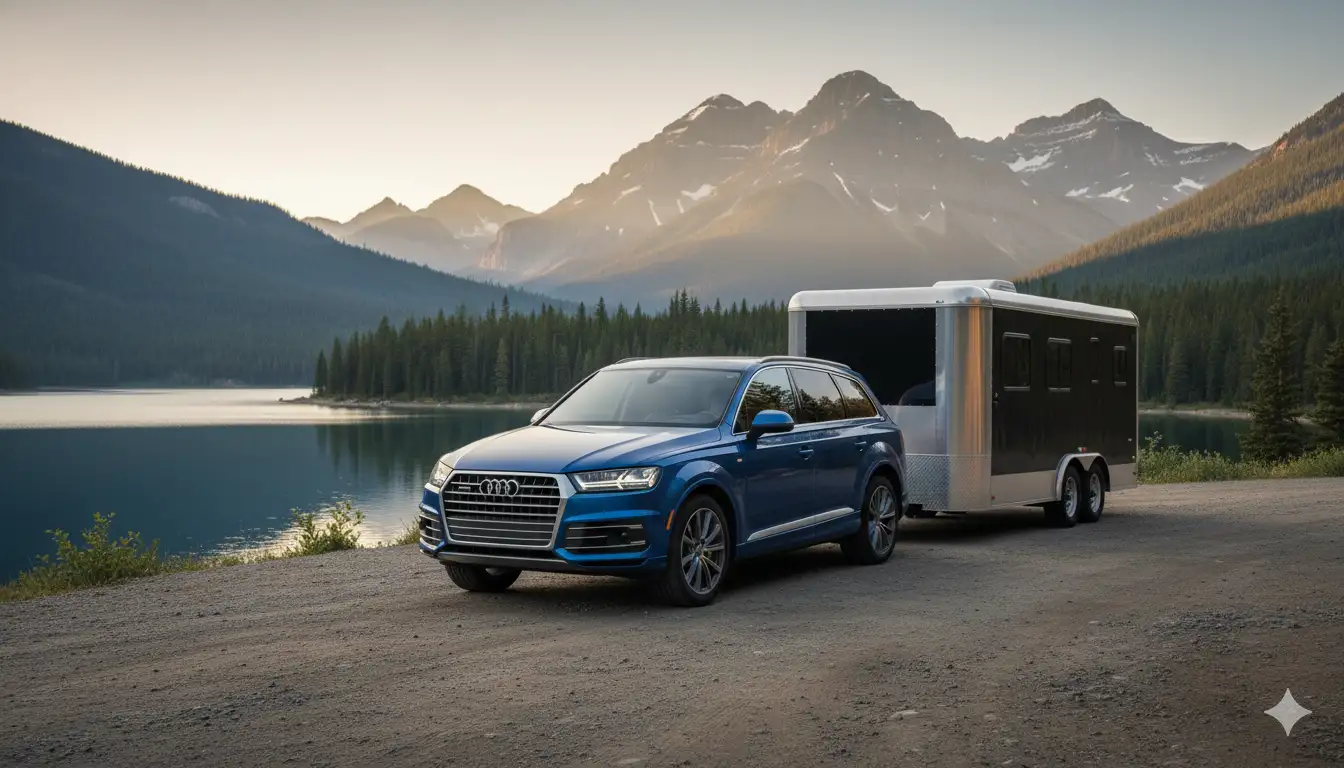
Key Takeaways
- The Q7 offers 4,400 lbs (4-cylinder) or 7,700 lbs (V6/V8) towing capacity
- Factory towing package with Class III hitch required for maximum capacity
- Package costs $700-$1,200 when factory-ordered
- V6 and V8 models provide identical 7,700-pound ratings
- Tongue weight limits are 10-15% of trailer weight
- The Q7 matches or exceeds most German luxury SUV competitors
- Proper equipment and weight distribution are critical for safe towing
Decision Path / Next Steps
After understanding the Audi Q7’s towing capabilities, follow these strategic steps:
- For Prospective Buyers: Order the factory towing package during vehicle configuration to save $500-$800 versus dealer installation. Select the V6-powered 55 TFSI for optimal balance of capability and efficiency. The 2024 BMW 2-Series Gran Coupe offers an alternative for those not requiring towing capacity.
- For Current Q7 Owners: Verify your engine type and current equipment through the driver’s door jamb sticker or owner’s manual. Contact your Audi dealer for retrofit pricing if towing capability is needed. Research best all-season tires for Audi to ensure proper traction when towing.
- For Towing Preparation: Calculate total loaded trailer weight including all cargo and fluids. Ensure trailer brakes are operational for loads exceeding 4,400 pounds. Consider what does quattro in Audi mean to understand how all-wheel drive enhances towing safety.
- For Comparison Shopping: Test drive the Q7 against BMW X5 and Mercedes GLE with similar towing packages. Evaluate real-world fuel economy impacts and consider long-term ownership costs. According to Autvex research, the Q7’s standard third row provides added versatility over two-row competitors.
FAQs
What is the maximum towing capacity of the 2025 Audi Q7?
The maximum is 7,700 lbs for V6 (55 TFSI) and V8 (SQ7) models with the factory towing package. The 4-cylinder (45 TFSI) maxes out at 4,400 lbs.
Do all Audi Q7 models have the same 7,700 lb towing capacity?
No. Only the Q7 55 TFSI (V6) and SQ7 (V8) achieve 7,700 lbs. The Q7 45 TFSI (4-cylinder) is limited to 4,400 lbs.
What is the towing capacity of the 4-cylinder (Q7 45) Audi Q7?
The 4-cylinder Q7 45 TFSI has a maximum towing capacity of 4,400 lbs when properly equipped with towing package.
What is the towing capacity of the V6 (Q7 55) Audi Q7?
The V6-powered Q7 55 TFSI can tow up to 7,700 lbs with the factory towing package installed.
What is included in the Audi Q7 towing package?
The factory package includes a Class III hitch receiver, 7-pin trailer wiring connector, trailer brake controller, and enhanced cooling systems.
Does the Audi Q7 come standard with a tow hitch?
No, the tow hitch is not standard. It must be ordered as an optional factory package or dealer-installed accessory.
How much does the Audi Q7 tow package cost?
The factory towing package typically costs $700-$1,200 when ordered with the vehicle, or $1,500-$2,000 for dealer installation.
Can an Audi Q7 tow a 6,000 lb trailer?
Yes, but only the V6 and V8 models with the towing package. The 4-cylinder model cannot safely tow 6,000 lbs.
Can an Audi Q7 tow a boat?
Yes. The 4-cylinder can tow small boats under 4,400 lbs. V6/V8 models can handle larger boats up to 7,700 lbs.
Which tows more, the Audi Q7 or the BMW X5?
The Q7 tows slightly more at 7,700 lbs versus the X5’s 7,200 lbs when both are properly equipped.
What is the tongue weight limit for an Audi Q7?
Typically 10-15% of trailer weight, meaning 770 lbs maximum for 7,700 lb trailers and 440 lbs for 4,400 lb capacity.
Does the Audi SQ7 have a higher towing capacity?
No, the SQ7 matches the Q7 55 TFSI at 7,700 lbs despite having more power from its V8 engine.
References
- Audi Trois-Rivières. (2025). The Towing Capacity of the Audi Q7. https://www.audi3rivieres.com/blog/2025/august/25/audi-q7-towing-capacity.htm
- Audi Mission Viejo. (2024). How Much Can a 2025 Audi Q7 Tow & How is Towing Capacity Determined. https://www.audimv.com/en/seo—research/2025-audi-q7-towing-capacity-and-more/
- Auto Zonic. (2023). What is included in the Audi Q7 towing package? https://www.autozonic.com/what-is-included-in-the-audi-q7-towing-package/
- Autvex. (2025). What is the Towing Capacity of an Audi Q7? https://autvex.com/what-is-the-towing-capacity-of-an-audi-q7/
- Audi West Island. (2025). Towing Capacity for the Audi Q5, Q7, Q3 and Q8. https://www.audiwestisland.com/blog/2025/august/12/audi-q3-q5-q7-q8-towing-capacity.htm
- Audi Northwest Indiana. (2024). Compare 2025 Audi Q7 vs. 2024 BMW X5. https://www.audinwindiana.com/en/research/q7-vs-bmw-x5/

I am a senior automotive analyst at Autvex. Expert vehicle evaluations, in-depth reviews, and objective analysis helping readers make informed automotive decisions with years of industry experience.

